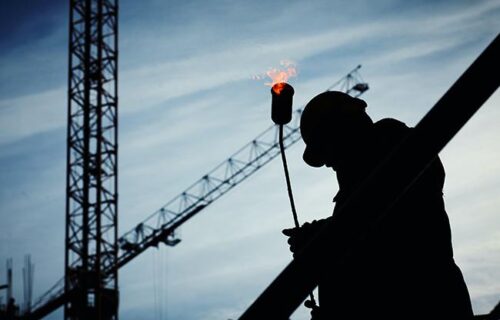Industrial and construction production in the Czech Republic showed a year-on-year improvement in May, according to the Czech Statistical Office (ČSÚ), they both increased by 3.3 percent. Industry rose after three months of declines, while construction maintained its growth from the previous months, but its pace slowed. The revival of production had a positive effect on Czech exports, yet the Czech Republic’s foreign trade ended in a deficit of CZK 23.3 billion for the fourth month in a row. Due to the weakening demand, expensive energy and prices of imported raw materials or the lack of labor and materials, however, the prospects for the economy are not favorable according to the interviewed analysts.
In May, industrial production was driven by a large part of the sector, including automobile production, whose production increased by almost a tenth year-on-year, even thanks to the low comparative base. “Finally, the result was not dragged down by automobile production, which, on the contrary, contributed significantly to the overall score,” said Raiffeisenbank analyst Vratislav Zámiš. According to him, although the growth went across industrial sectors, the data shows that the stagnant trend is difficult to escape from the industry.
From the data of the ČSÚ, it emerged that leather production and furniture production improved the most, by a fifth, year-on-year in May. The production of beverages increased by approximately 17 percent and the production of pharmaceutical products by 15 percent. On the contrary, the production of other means of transport and equipment fell significantly, by 28 percent year-on-year.
UniCredit Bank analyst Patrik Rožumberský believes that in the next period the industry may experience slight tension in supply chains and rising input prices in combination with weakening demand. According to him, the second of the influences seems to prevail. Industrial production will probably not have a better result than year-on-year stagnation for the whole of this year, he added. According to Jakub Seidler, the economist of the Czech Banking Association, this year the industry will only slightly exceed the pre-pandemic level of 2019.
According to analysts, the construction industry will also be negatively affected by expensive energy and a lack of raw materials in the next period. In addition, the development of the industry will be negatively affected by the lack of workers and higher mortgage loan rates, which may reduce the demand for construction. Currently, according to Peter Markovič, director of Xella for the Czech Republic, which produces Ytong construction material, there are enough orders and sufficient demand from private individuals and companies. There are more building permits and apartments and houses under construction than in recent years, he said.
In May, building construction, which is the construction of residential and non-residential buildings, increased by 3.5 percent compared to the same month last year, according to the ČSÚ, and the production of engineering construction, i.e. building roads or telecommunications and energy networks, by 2.8 percent. In the next period, according to Markovič, the obstacles to the growth of the industry will be the lack of people, the pressure for higher wages or expensive raw materials. “This confirms that it will take several years for the performance of the construction sector to return to pre-Covid levels,” he said.
In a month-on-month comparison, construction production rose by 0.4 percent and industrial production by 2.4 percent.
Thanks to the revival of car production and exports in May, Czech exports grew by 18.1 percent year-on-year to 390.3 billion crowns, while estimates indicated a slower pace of up to ten percent, according to Raiffeisenbank analyst David Vagenknecht. In addition, according to him, exports were more significantly affected than expected by the import of energy commodities. Overall, imports improved by 26.3 percent compared to last May to 413.6 billion crowns. It is the import values that will continue to push the trade balance into deficit, according to the economists interviewed. According to them, improvement cannot be expected due to the high prices of imported raw materials.
Source: ČSÚ and CTK
